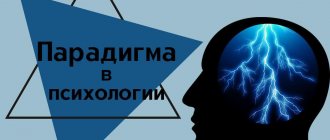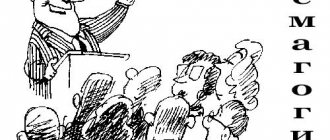Association. The famous Italian writer Gianni Rodari compared the spoken word to a stone thrown into a pond. The circles diverging from it not only stirred up the water, they made completely unrelated objects move in the same rhythm: an autumn leaf on the water, a reed, a fisherman’s float, a water lily. The word we hear causes similar waves. Only these are waves of excitation diverging in the cerebral cortex. They involve thoughts, images, memories into movement. This is the process of the birth of associations, which play a very important role in the human psyche.
Associations from a psychological point of view
The concept of “association” was introduced by the English philosopher of the 17th century J. Locke, but the phenomenon itself has been known since Antiquity and was described by Plato and Aristotle.
Association as connection
Communication is how this concept is translated from Latin. It has many meanings, but in psychology this term refers to a spontaneous connection that occurs in the human brain between objects, phenomena of reality, memories and imaginary images. That is, such connections are caused by both external stimuli (words, smells, visual images, sounds, etc.) and information stored in memory.
The stimulus for the emergence of associations can also be internal processes in our organs. For example, heaviness in the stomach and heartburn instantly cause an association with a piece of fried fatty meat eaten at lunch.
Even your own thoughts can literally provoke a fan of associations. I think each of us has found ourselves in a situation where some random thought pulled out from the depths of our consciousness another thought that seemed unrelated to it. And that, in turn, grabbed a third, a fourth... And after some time we asked ourselves in surprise how our thoughts got here, why suddenly seemingly long-forgotten images were spinning in our heads.
Association
Psychophysiological mechanism of associations
The basis of associations is a conditioned reflex reaction. Any sufficiently strong stimulus (word, image, smell, sound, thought) causes a focus of excitation in the cerebral cortex. This excitation along the nerve fibers from one neuron to another spreads in breadth and depth. Waves of excitation also capture new areas of the cortex, activate traces of previous foci of excitation, and evoke images, feelings, and ideas from memory. They are included in the thinking process and update new and new images.
The famous English creativity researcher T. Buzan compared associative thinking with fireworks. First, one sparkle-thought takes off, which explodes into dozens of new ones, and they, in turn, scatter in a fan of fiery splashes, covering the entire sky with a shining ball.
The process of creating associations is very important for the normal functioning of consciousness, for the effectiveness of our thinking and depends on the following factors:
- The speed of nervous processes, which also determines the speed of reflex reactions. This means the time and area of propagation of the nerve impulse. The higher the speed, the faster and more diverse associations arise.
- Memory and information stored in it. The more extensive and varied our knowledge, the richer the associations and, accordingly, the more original the products of thinking.
- Imagination. In the process of birth of associations, emerging images can be processed, transformed, and their elements can be combined in new combinations. This is how the imagination works, and the new images it creates enrich our memory and participate in thinking.
- The area of the subconscious. Associative processes, which are based on the spontaneous spread of excitation in the cerebral cortex, spreading deeper, connect the level of the subconscious to thinking. Since a huge amount of information that we are not conscious of is stored there, and there is no targeted access to it, associations are one of the few channels of communication with this mysterious level of the psyche.
Associations are individual in nature, as they are associated with experience and information stored in a person’s memory. However, there are also stable connections that are inherent in many people due to their common experience, interests, professional activities, etc. There is an interesting example or a kind of test. What association do you have with the word “undead”? Some people associate this concept with a gentle, affectionate attitude. And for those who are fond of books and films in the genre of mysticism and fantasy - with terrible supernatural creatures. There are even more universal associations, for example, snow in people’s minds is associated with winter, heat with summer, falling leaves with autumn.
Images of abstract concepts
Usually it is not a problem to imagine images of things and objects. When you say “cup,” you see your favorite cup, which has a shape, color, and weight. “Road” will conjure up a section of road that is familiar to you. But what to do with abstract concepts that have no substantive embodiment, such as “consent,” “obligation,” or “suggestion”? There are two methods for recoding such concepts into images. The first is based on consonance. You choose a word or words that sound similar to the one you want to remember. Then you encode exactly this consonant word into an image.
The second technique uses symbolic imagination: you select a specific symbol image intuitively so that it expresses an abstract concept. This symbol may be generally accepted, or it may be understandable only to you. “Consent” is reminiscent of voices sounding in unison. The image of the choir is easy to imagine visually. “Obligation” is consonant with a wagon train that must be dragged along as a burden of obligations. “Suggestion” can be imagined as a tall snowdrift—the first three letters are often enough to build the association.
If you want to use symbols, "agreement" can be thought of as a firm handshake. Or like the Egyptian obelisk on the Place de la Concorde in Paris. The “commitment” can be presented in the form of an official document with a stamp. “Suggestion” can be symbolized by a stage hypnotist in a turban and a cloak with a red lining. Associations and symbols are very individual. A connoisseur of the Middle Ages associates the word “suggestion” with the name of Abbot Suger, who lived in the 11th–12th centuries and is known as the designer of the Gothic temple of Saint-Denis in the suburbs of Paris. The broader a person’s horizons, the easier it is for him to select associations and remember new things.
Exercise
Take a dictionary of terms in a field of knowledge that is unfamiliar to you: technology, philosophy or psychology. Open it at random and select images for the words you encounter, using phonetic and symbolic associations.
Types of associations
The first known classification of associations was created by Aristotle, and we still use it. The ancient philosopher identified three types of connections:
- By similarity. In order for this connection to arise between two objects or phenomena in the human brain, they must be similar in some way: appearance, color, emotional impact, etc. Thus, the number 2 is associated with a goose, the sky with the ocean , and a snowy plain with a white sheet.
- By contiguity. This common type of connection occurs when we frequently perceive some objects at the same time. For example, the smell of pies can cause an association with home, with childhood, with an affectionate grandmother; the sound of the surf means happy holidays, and the aroma of tangerines and pine needles means happy New Year. This type also includes verbal associations born from set expressions. For example, in response to the word “willow”, many people will think of “weeping”, birch - white-trunked, oak - mighty, etc. But an association by contiguity can also reflect the presence of a real connection or interaction between objects. Thus, a hat is associated with the head, a cart with a horse, and the moon with the night.
- By contrast. This is the most complex type of association, difficult to explain. The image that appears in the mind causes an association with its opposite in meaning. So, if you say the word “day,” most people will remember night. Summer - winter, heat - cold. Such associations are the source of interesting vivid metaphors, for example comparing snowflakes to sparks.
Later, Aristotle's classification was supplemented by one more type. Associations by meaning are the result of the analysis of information and the emergence of complex logical and semantic connections in the human brain. They are largely individual and determined by personal experience, but there are also ones that are understandable to most people. For example, rain means a runny nose, the sea means an airplane. It is not difficult to establish a semantic connection between them.
The test question method will help launch the creative process
Published: 03/17/2018
The test question method is a creative technique that allows you to look at a problem from different angles using a list of questions and find a non-standard solution. It will be useful for designers, copywriters, engineers, screenwriters, scientists, and anyone who needs to find a non-trivial solution. It should be said that this technique does not have an author as such. Equally, many techniques use lists of questions. The sequence of actions when using the method...
no comments yet
Psychodiagnostic methods using associations
Since the beginning of the 20th century, connections spontaneously arising in the cerebral cortex have been used by psychologists to diagnose human mental states. S. Freud was the first to draw attention to the connection between free associations and processes occurring at the level of the unconscious. According to his theory, at this deep level of the psyche there are instincts and desires suppressed by a person, which contradict the requirements of society.
But having driven these forbidden desires into the far corner of the unconscious, a person did not get rid of them. They continue to influence his behavior, provoke phobias or strange behavior, and even cause mental disorders and organic diseases.
Free association method
Associations that arise involuntarily carry information about these suppressed desires and instincts, which allows a psychologist or psychiatrist to make a diagnosis. For this, S. Freud developed and began to use the method of free association, which to this day is one of the main ones in psychoanalysis.
The principle of this method is very simple. Having assumed a comfortable position and relaxed, the patient should simply say whatever comes to his mind. He can talk about his problems, or he can simply reflect on the meaning of life or discuss his colleagues. You need not to control, not to analyze, not to choose the right words, but to speak freely.
The patient’s thoughts and words themselves evoke different associations in his mind, generating a new stream of speech activity and pulling out from the unconscious what is hidden there and interferes with life. But the psychoanalyst must recognize the connection between individual phrases, words, and reservations of the patient and his psychological problems and complexes, identify these problems and reveal their essence to the client.
Variety of association methods
Currently, associative thinking is used in many psychodiagnostic techniques that make it possible to study the characteristics of an individual’s mental state, his problems, experiences and attitude towards others. Unlike Freud and his followers, representatives of other psychological movements prefer to use not free associations, but more organized and controlled by a psychotherapist. The methods are developed in such a way as to not only stimulate the emergence of associations, but also to be able to statistically process the results and compare them with data from other clients. All such diagnostic methods can be divided into three groups of tests:
- Based on verbal associations. In such tests, subjects are presented with a series of words or phrases, in response to which they must say the first thing that comes to mind. The very formulation, meaning, and scope of use of phrases are designed to reveal the internal problems of the person being diagnosed. One of the most popular such techniques is the “Paired Associations” test.
- Based on visual associations. Looking at the proposed pictures, often abstract, the client must say what they remind him of. The most famous of these techniques are the Rorschach Ink Blot Test and metaphorical cards.
- Based on the analysis of creative products. In order to study unconscious associations, the diagnosed person is asked to complete a creative task, for example, write an essay on a given topic or draw something. The creative process frees thinking and connects the subconscious to the process, which facilitates the birth of associations and opens access to archetype images, hidden desires and poorly understood problems.
Associative thinking is not only a source of important information about a person, it is a necessary condition for the intellectual and creative development of the individual.
Features of associative thinking
It has been established that the number of direct associative connections of any concept (word) is on average about ten. One associative step allows you to choose from 10 words, the second - from 102, the third - from 103, the fourth - from 105. Thus, each step increases by an order of magnitude the number of connections of a given concept with other concepts according to certain characteristics, which significantly expands the possibilities selection of solution ideas.
A feature of associative thinking is the ability to identify common features of things - to generalize without conducting logical analysis. Associations can be seen as a source of additional information that can be used in the creative process.
Associations are capable of “pulling out” from the recesses of our consciousness the most diverse, often quite unexpected, memories, images, thoughts, which significantly expand the area of creative search.
Methods of associative search for ideas are good, for example, when creating the plot of an advertising video. Unexpected elements attract attention and make people focus on the advertisement. You can search for associations using visual images. In Google, Flickr, Pinterest, search for the word of interest. The result is an expansion of the range of creative solutions and inspiration for their development.
Memorizing foreign words
In intelligence schools, teaching foreign languages has been put on stream. For experienced teachers, there are no incapable students. A scout is selected based on his mental abilities, and teaching him to speak any language fluently and without an accent is a matter of technique. At the initial stage of language acquisition, the student needs to memorize pairs of words, one of the words is known (in his native language), the other is not (in a foreign language). Use the following algorithm.
1) A known word in the native language is encoded using an image. You are familiar with this technique from the story method.
2) The second, unknown word is easier to encode through phonetic similarity: select one or more words in your native language so that together they are consonant with the foreign one.
3) Connect in one story the image of a word in your native language with images of words that are consonant with a foreign one.
For example, you need to remember the English word “habit” - habit. It is consonant with the name of one of the peoples in Tolkien’s works, hobbits. To remember the pair “habit - habit”, you can imagine a hobbit from a fairy tale, leading a measured lifestyle, not deviating from his habits. A more complex word is remuneration, reward. To remember the correct transcription, it is quite acceptable to replace it with the Russian “remuneration”. How can you remember this? “Young people with a salary go to Rome.” This phrase helps you remember half of the English word and its Russian translation. With practice, you will learn to quickly create similar stories, which means memorizing at least 50–70 foreign words in one lesson.
Exercise
Buy a small dictionary containing 500–1000 of the most common words in the language you have long dreamed of learning. Using the described technique, you will remember them quite quickly, and this will be a good start to fulfilling your dreams.
Memorizing phrases
The ability to quickly memorize lists of words and create visual stories opens up the possibility of remembering larger amounts of information, in particular phrases and fragments of text. For example, you are being briefed before a new task and you need to remember the password: “Zakhar Borisovich told me to tell you that the cranes will be there next week.” One of the options for the history of such a password will be like this. Leopold Sacher-Masoch (he wrote “Woman in Furs,” so he’s wearing a fur coat) stands hugging Russia’s first president, Boris Yeltsin. Of course, both have a commanding look, because they both enjoyed power (though each in their own way). Sacher-Masoch hands you a bunch of construction cranes. The cranes are wrapped in their delivery schedule - a large sheet of calendar on which the second line is shaded - next week. Now try to forget this phrase.
Exercise
Create visual stories for proverbs, sayings and catchphrases you know.










